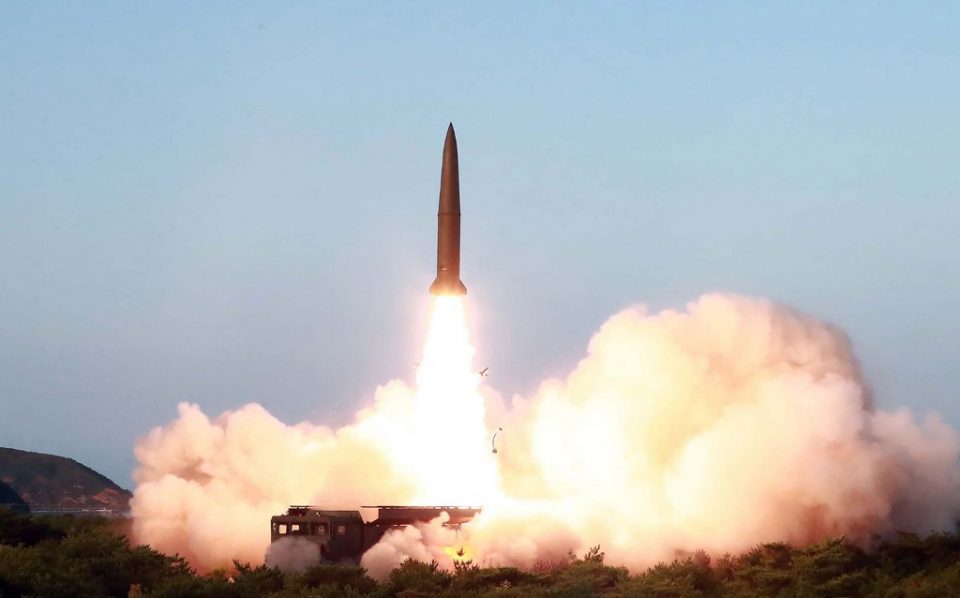
SEOUL, South Korea (AFP) — North Korea launched “multiple unidentified projectiles” on Wednesday, Seoul said, days after firing two ballistic missiles as a warning to the South over planned joint military drills with the United States.
A “number of projectiles” were fired from the Wonsan area on the east coast at dawn, said an official with South Korea’s Joint Chiefs of Staff.
“We can’t say at this point how far they flew and are analyzing them while preparing for additional possible launches,” the official told AFP.
There was no immediate statement from the nuclear-armed North on the launch, which came six days after leader Kim Jong Un personally supervised the firing of two missiles despite a meeting with US President Donald Trump last month.
Pyongyang and Washington are engaged in a long-running diplomatic process over the North’s nuclear weapons and ballistic missile programs that have seen three high-profile meetings between their leaders in the space of a year.
The North has defied years of isolation and sanctions to develop its arsenal and has not given up any of its weapons while proving itself adept at dragging out negotiations.
Kim and Trump agreed to resume nuclear talks during their impromptu June encounter in the Demilitarized Zone that divides the peninsula, but that working-level dialogue has yet to begin.
Pyongyang has warned the talks could be derailed by Washington and Seoul’s refusal to scrap the annual maneuvers between their forces.
Speaking to reporters on Wednesday, US Secretary of State Mike Pompeo did not address the launch but said talks would “start before too long,” without giving details.
The latest launch was a warning to the two security allies to stop the exercises “or we will continue to show off our own offensive military capabilities and raise tensions to a slow boil over time”, said Harry Kazianis of the Center for the National Interest in Washington.
Pyongyang will carry out more launches before the drills begin in August and again afterward, he predicted.
“The only question is would the Kim regime dare test an ICBM, or a long-range missile, that could hit the US homeland?”
– ‘Solemn warning’ –
Pyongyang said last Thursday’s launches were of newly designed “tactical guided weapons” that were a “solemn warning to the South Korean warmongers” over the planned military drills with the US.
Washington stations nearly 30,000 troops in the South to defend it from its neighbour, which invaded in 1950.
The devices were widely described as ballistic missiles, including by the US-South Korean Combined Forces Command and the government in Seoul, which are banned under UN Security Council resolutions on Pyongyang.
But Trump — who has repeatedly touted his relationship with Kim, whose regime is widely accused of human rights abuses — brushed off the North’s bellicose language, saying it was warning Seoul rather than Washington.
“He didn’t send a warning to the United States,” Trump said. “They have their disputes, the two of them have their disputes.”
The Korea Times condemned what it called the US president’s “wilful ignorance” in an editorial Tuesday, before the latest launches.
Trump “gives the impression that he doesn’t mind its missile launches as long as they are short-range, and not threatening the US”, it said.
“Such a way of thinking is frustrating — and dangerous,” it added. “Most of all, he can give the wrong signal to the North that the US will not step in as long as it does not target the US mainland. What about US allies in Asia?”
© Agence France-Presse
